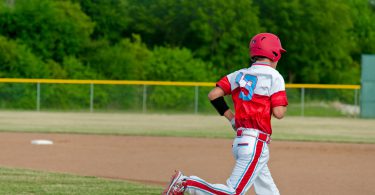The Situation:
There’s a runner on second with no outs in the third inning of a 0-0 game. A right-handed batter is facing a left-handed pitcher with a 1-1 count.
The Play:
The pitcher comes set and delivers a breaking ball that sweeps across the plate. The hitter swings and hits a low chopper in the 5-6 hole. The shortstop charges right and the third baseman ranges left and cuts the ball off with his momentum going towards the runner at second who has stopped to read the play. The third baseman squares his shoulders off towards first and makes a strong throw on the run to get the out, ending up in no-man’s land behind the mound and a few steps onto the grass. Behind the third baseman, the shortstop has broken down and is watching to see if the ball will beat the batter to first.
The Outcome:
The ball beats the batter to first, but while the shortstop is spectating, the runner from second breaks towards third, catching him off-guard. The shortstop realizes his mistake and sprints to third. Given his head start, he is a step or two ahead of the runner, but from the first baseman’s perspective, they are getting to third around the same time and he would have to throw to a moving target. He thinks better of it and holds onto the ball. 1 out, runner on 3rd.
What Went Wrong?
This is a play where the shortstop is already moving towards third and simply needs to continue on his path all the way to cover the bag, without hesitation. Logically, the next potential play would either be at second or third, and the second baseman is moving towards the second base bag and has that responsibility covered. With the third baseman too far from third with his momentum carrying him even farther away, this is the shortstops responsibility as soon as the third baseman gets to the ball.
When a nice play is in the making, it’s easy to get caught up in the moment and become a spectator. As a defender, you can’t fall for this trap. Every player on the field has a responsibility every single play. It can be helpful to think through the potential situations ahead of time and consider your different responsibilities, no matter where you are playing. This type of mistake is not one that will be well received at the college level, where the expectation is that every shortstop should know he needs to get to third. In this situation, it can be a costly mistake depending on what happens with the next few hitters. It’s a mistake the shortstop won’t make again, and you should learn from his mental lapse as well. Think the game!







